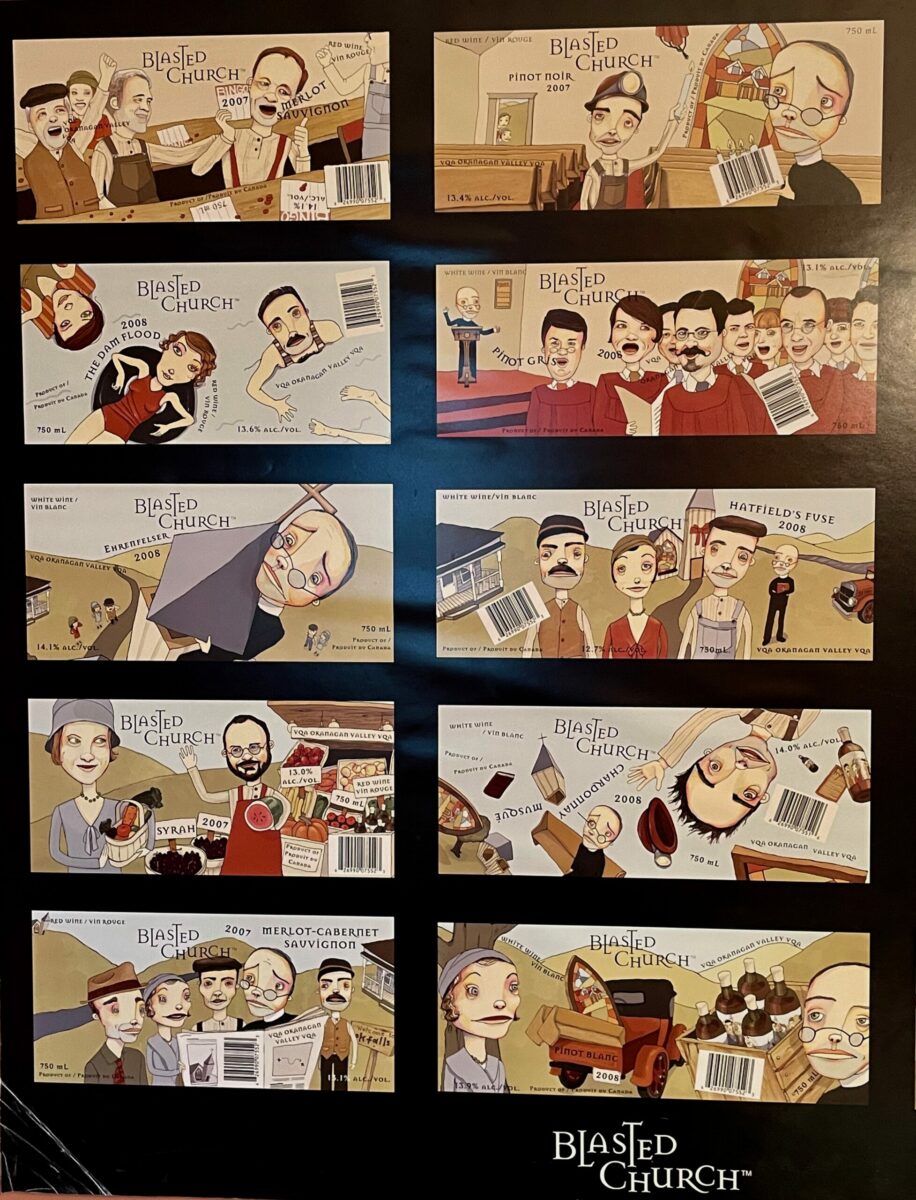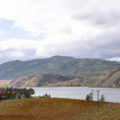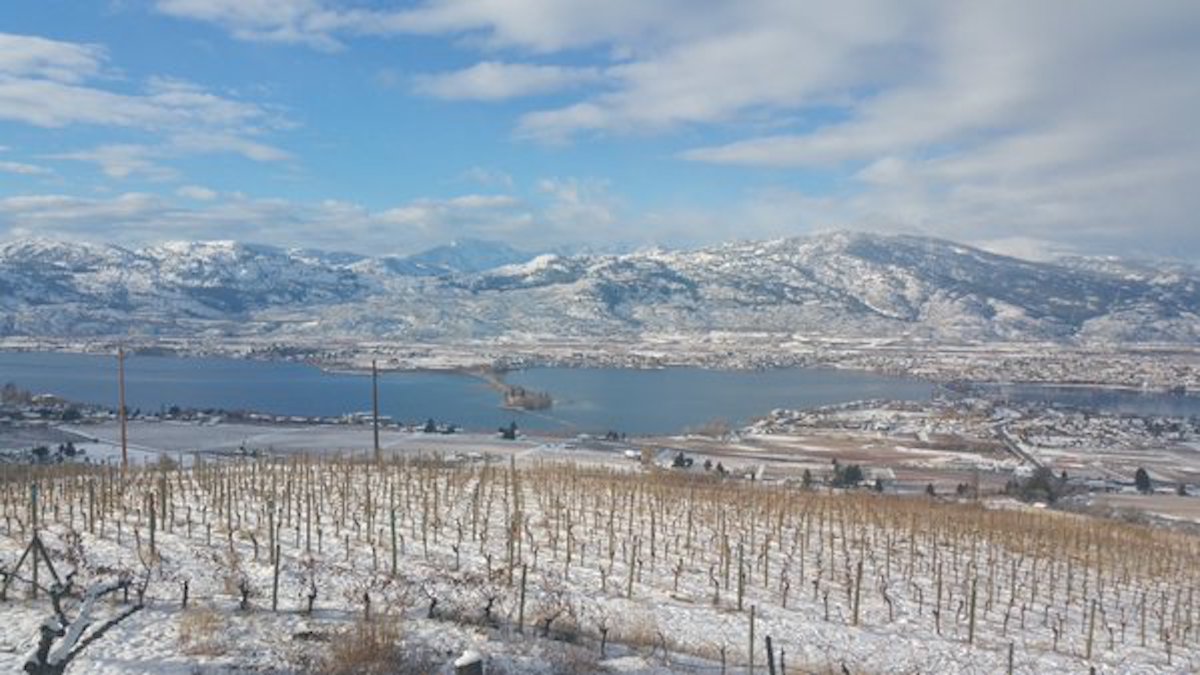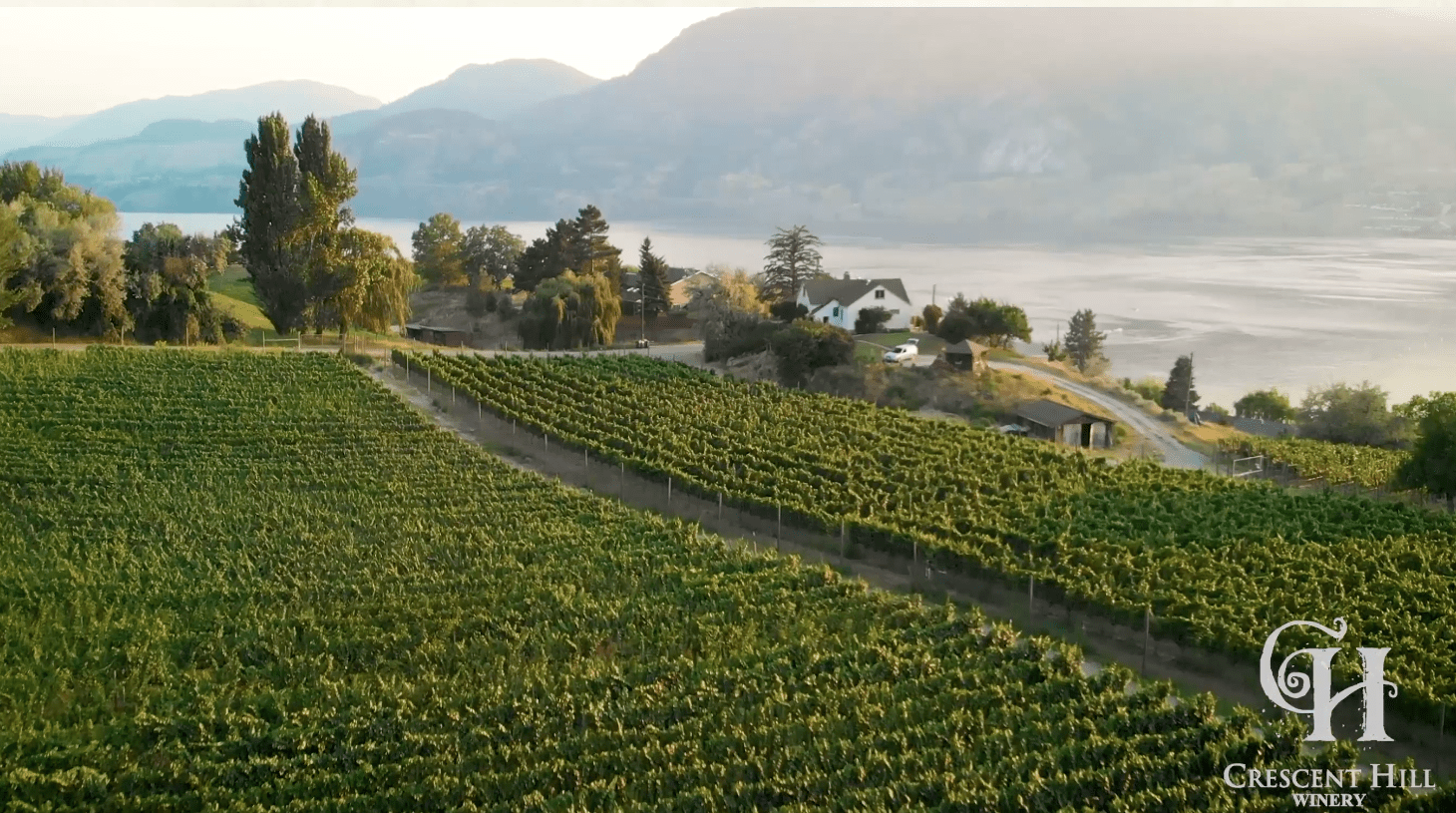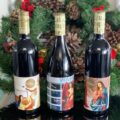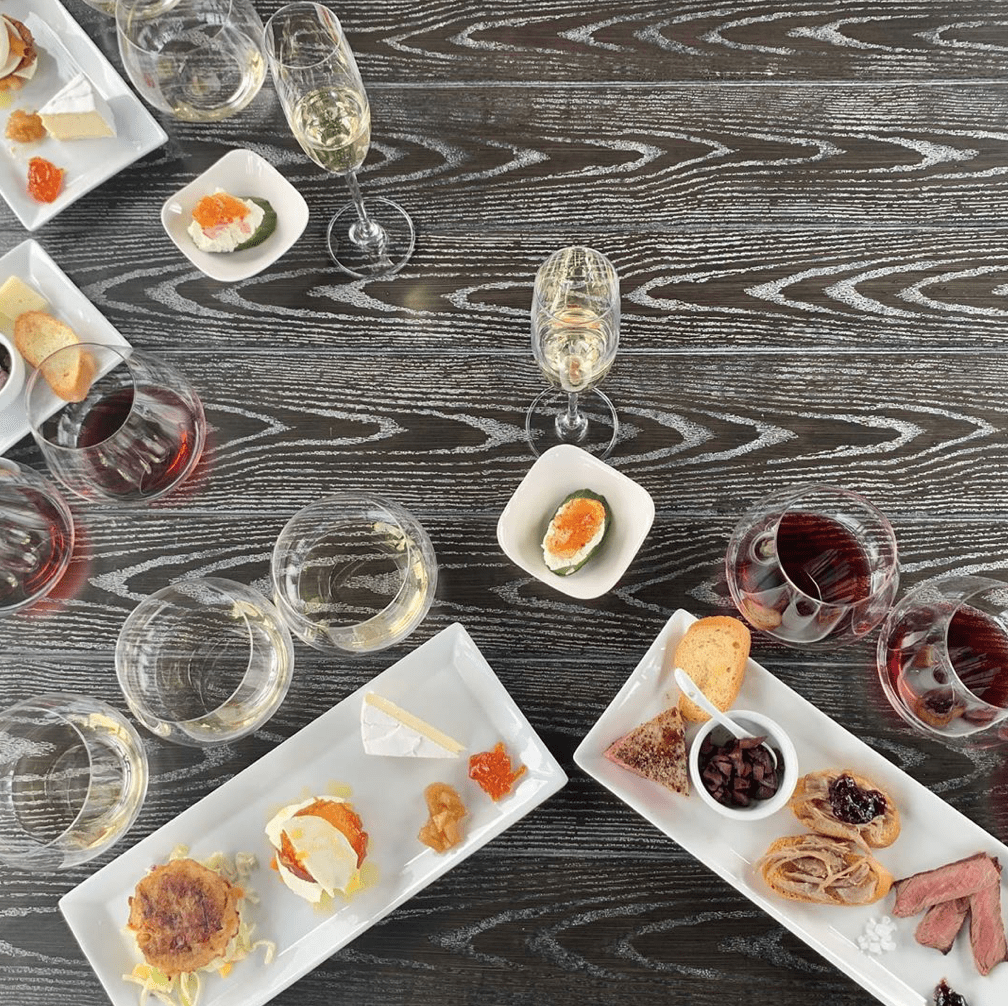Blasted Church was one of the first wineries to seize on funky eye-catching wine labels with equally intriguing names centred around their unique name – Holy Moly, Big Bang Theory, Hatfield’s Fuse, Amen, Nothing Sacred, Nectar of the Gods, and the Damned Flood among others. Every label tells a story. Blasted Church makes single-variety wines as well as blends.
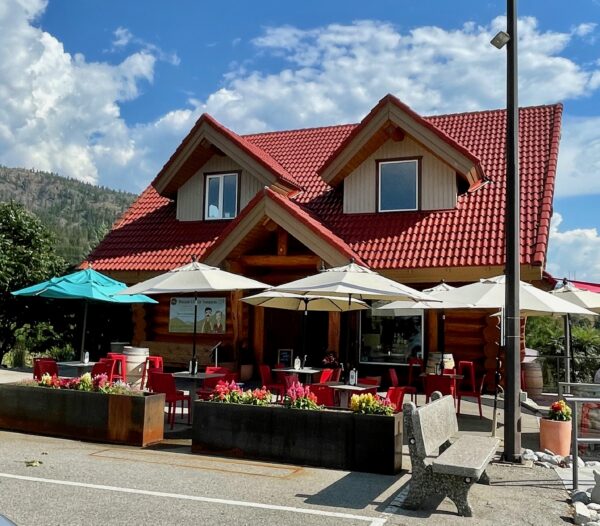
Tanya Martin is the general manager at Blasted Church winery and in 2020 Sean Morrison purchased a majority interest in the winery adding the necessary funds to help them expand their operations.
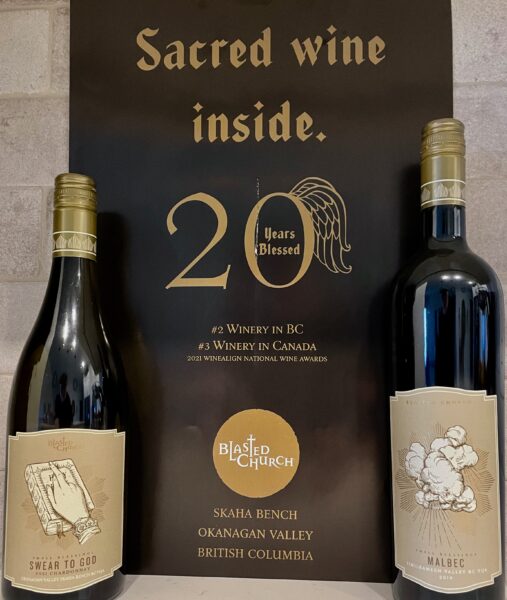
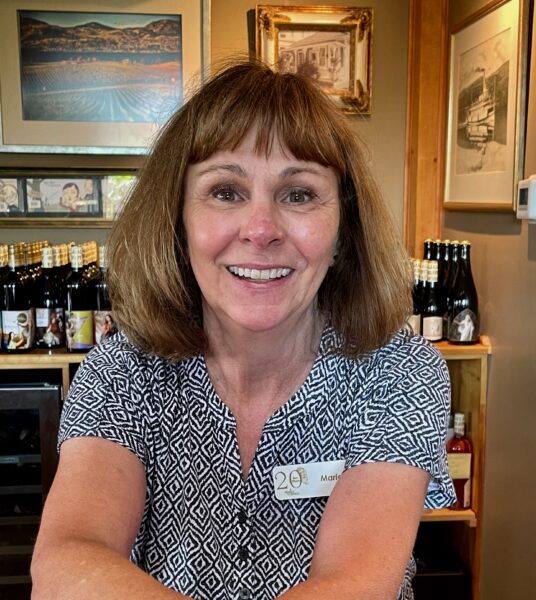
The day we arrived, to help celebrate their 20th anniversary, we were greeted by Marie, as warm and friendly a hostess as you could find anywhere.
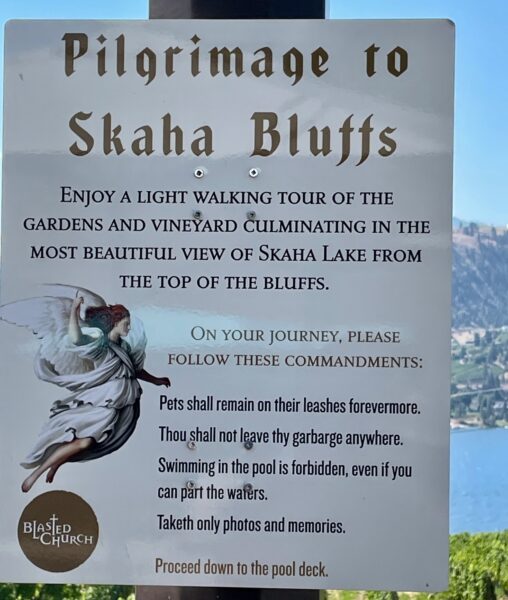
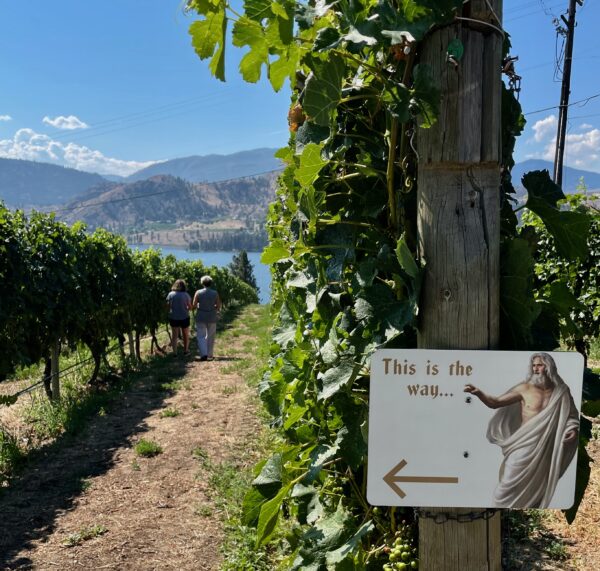
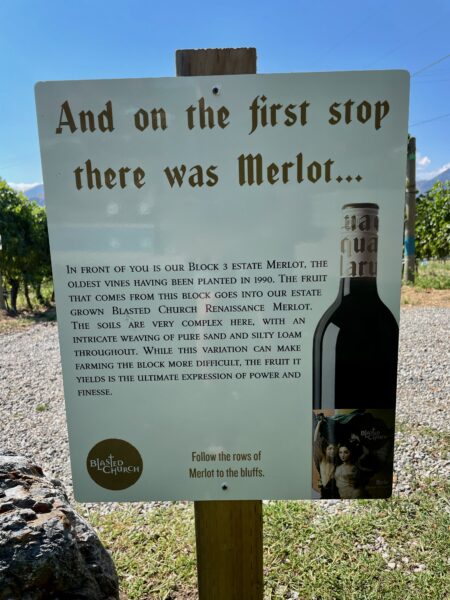
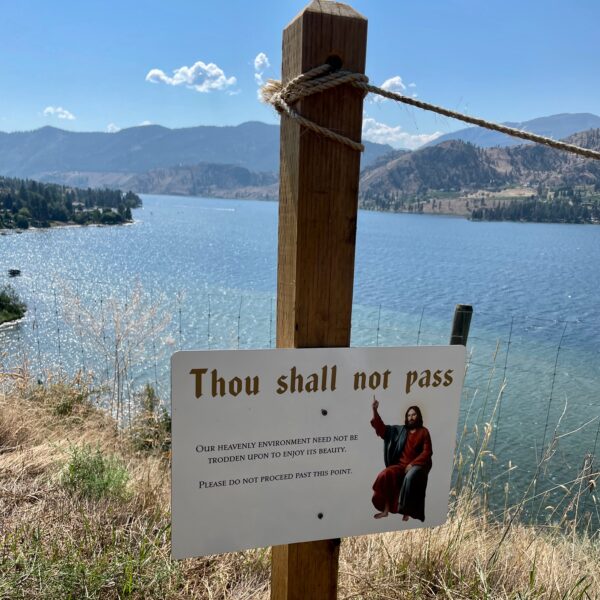
She took us on a tour of the vineyard, which is designed for self-guiding as well, and then brought us into the tasting room to meet Tanya and winemaker Evan Saunders.
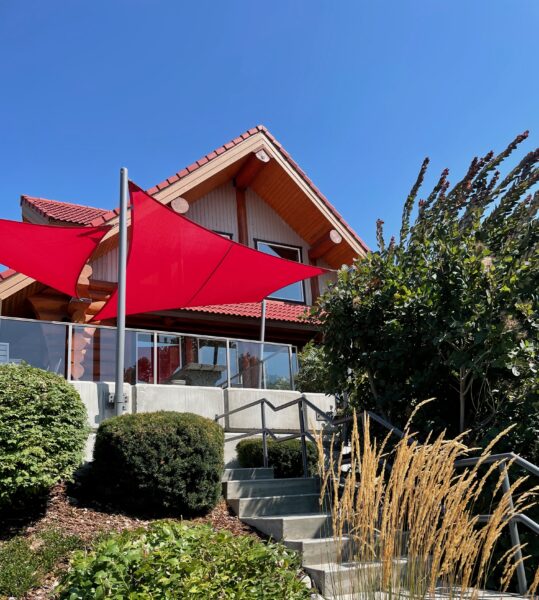
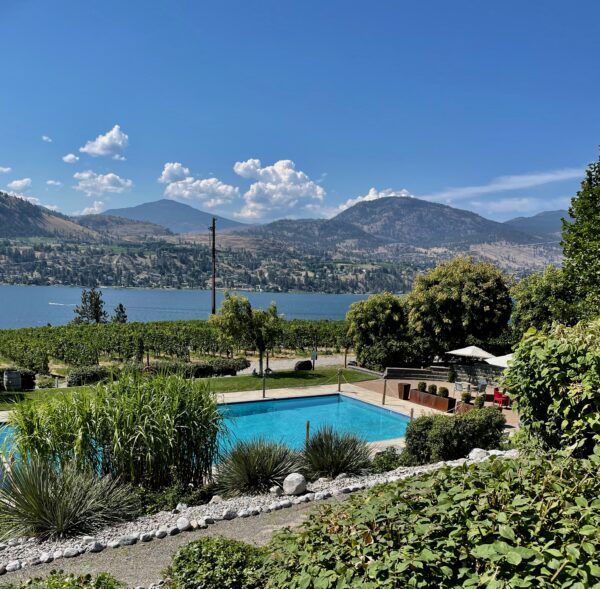
Their 40- acre setting on the east side of Skaha Lake is stunning. Don’t be in a rush when you visit. You will want some time just to drink in the beauty that surrounds you. In addition to their estate vineyard, they also contract grapes from another 60 acres in the south Okanagan.
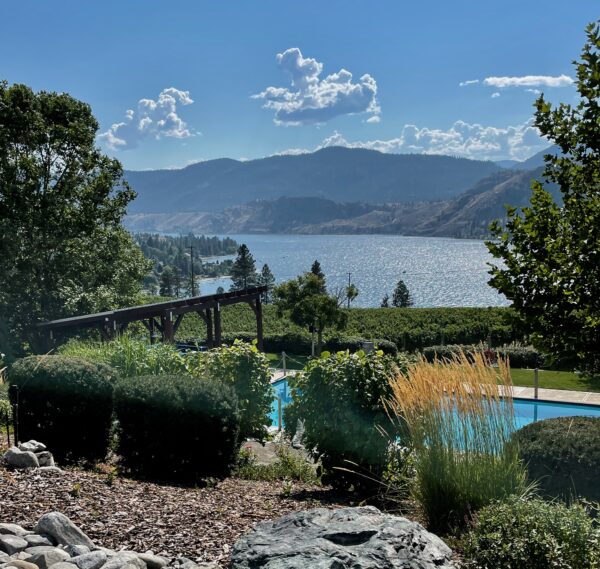
The surrounding vineyards are perfectly situated with a westerly aspect, reflected sunlight from the lake, and a gentle slope to help with airflow and drainage.
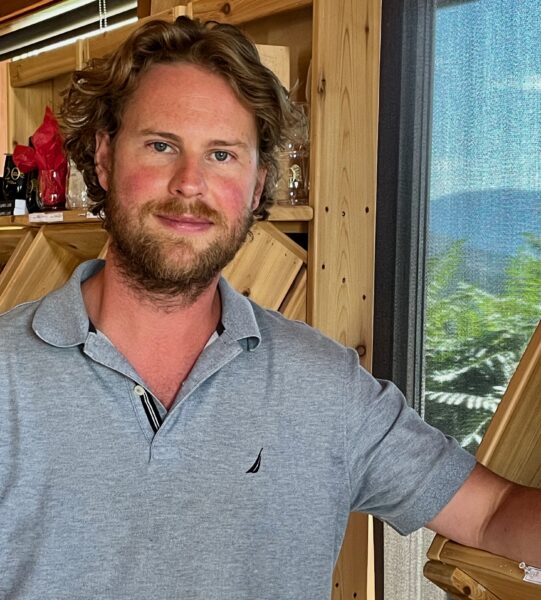
Evan was studying microbiology at the University of Victoria when he first became interested in wine. This was the first step of a journey that took him to the Grape and Wine Technology program at Brock University in St. Catherines, Ontario. Then it was on to Oliver, BC and California to gain experience working in different regions. He joined Blasted Church during the 2017 season and took the wines in new directions, creating bright, crisp whites (lower in alcohol and residual sugar). “I probably tend toward a fresher style,” Evan said of his wine making. “I pick a little earlier to really get vibrant acidity. A little fresher, a little less residual sugar.”
With the red varieties, he likes a longer hang time, long maceration time and more intense pump-overs for cap management. “I am focusing on each vineyard, to bring out the best each one has to offer.” This means experimenting with small lot red wine programs to hone in on just what works best with each of their source vineyards, including fermenting and aging in clay ‘eggs’ (large fermenting vessels). In addition, he has devoted considerable time testing various coopers (barrel makers) and the forests where the oak is harvested. It can make a big difference when you find just the right tightness of grain and toasting levels for specific grapes. Blasted Church had 125 barrels when he arrived. They now have about 800.
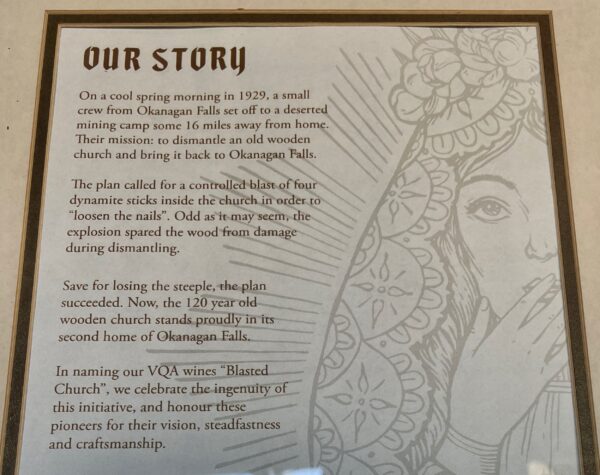
In the beginning, Blasted Church planted every variety they could to see what would work best on their site. Vintage 2022 will be the last for a few of the upper-block grapes. Evan has decided to rip out their Pinot Noir, Pinot Gris, and Pinot Blanc, and focus on what performs best on that site. Those vines will be replaced with Cabernet Franc, Malbec, and a bit of Nebbiolo.
The soil profile, which includes a creek bed, changes quite a bit across the property. The southern section has a lot of pure sand while other parts are quite rocky.
The original eye-catching labels were designed by Monika Melnychuk and Bernie Hadley-Beauregard (Brandever). Evan’s first bottle of wine, while studying at the University of Victoria, was Hatfield’s Fuse which had the first-generation labels. The bottle stood out and caught his eye. Blasted Church is now in its third re-brand which sometimes confuses its loyal customers who expect the exact same label for their favourite wines.
As Evan and I were chatting, Marie took us through a tasting of wines they were pouring.
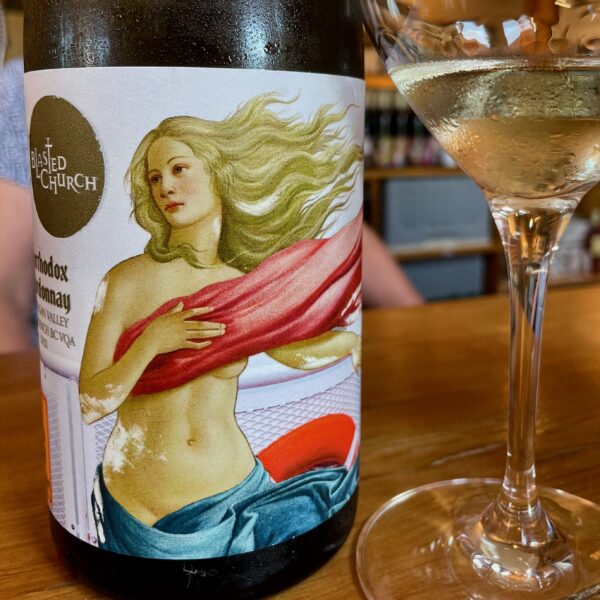
The first up was their 2021 Chardonnay – made with purchased fruit from the central southern Okanagan. It was 100% barrel-ferment, underwent malolactic fermentation and was bottled with the throwback label to celebrate Blasted Church’s 21st anniversary. It was crisp and bright with good texture and viscosity. Buttery and creamy with good acid balance.
The winery says:
“To celebrate our 20th anniversary as a winery, we have crafted a special wine complete with our beloved first-generation label, originally released in 2002. “The fruit was sourced from the central and south Okanagan. It was hand harvested and whole cluster pressed to tank for cold settling before racking to French oak barrels (15% new) for fermentation and aging. Fermentation was allowed to occur naturally, as was malolactic fermentation, which completed just prior to the wines being racked out of barrel to stainless steel tank ahead of bottling.”
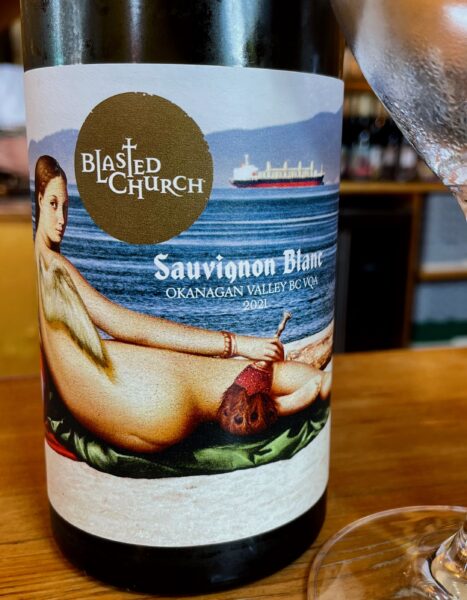
Next, the 2021 Sauvignon Blanc – fermented in oak, very nice. Classic varietal nose. The grapes were picked on three occasions – early in the season, midway, and later for complexity. Cropping was low – 1.5 tons per acre. Some blocks were even down to 1 ton per acre which is financially risky. 2021 was very much a low-yield year.
“The fruit was all whole cluster pressed to tank to cold settle then racked to neutral French oak barrels (30%) and stainless-steel tanks (70%) for fermentation and aging. Long, slow, cool fermentations helped to preserve the beautiful aromatics of the wines, while the combination of harvest dates allowed us to achieve the complexity in the finished wine. The earlier and later picking dates enhanced the herbaceous and tropical notes respectively while the oak fermentation and aging enhanced the wonderful texture.”
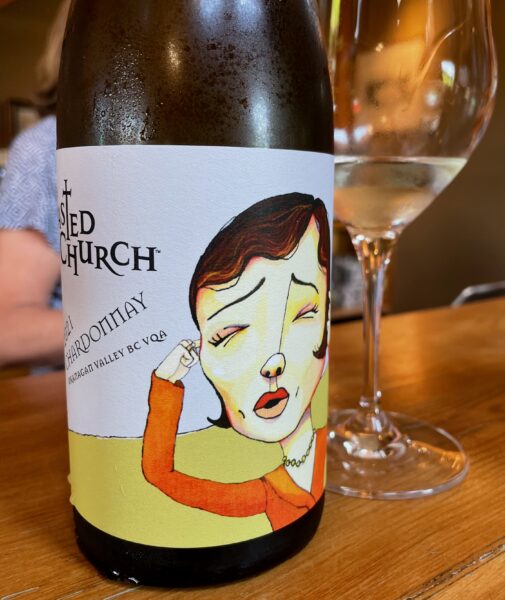
2021 Unorthodox Chardonnay Musque – this is a unique grape for the Okanagan. – Malivoire Wine Company in Ontario does it as well. It is a very Muscat-like chardonnay clone. Floral and spicy with lemon, apple, rose petal, and lychee. I would have perhaps guessed a Viognier or an early picked Gewürztraminer without the oily viscosity. Unoaked.
“Our estate grown Chardonnay Musque was harvested in two separate picks: the first on September 13th and the second on September 16th. Both lots were whole cluster pressed to tank to cold settle. The juice from each pick was racked to stainless steel tank for slow, cool fermentations to preserve the aromatic profiles of the wines. The two different blocks provided a great palette from which to blend the final wine. Lemon zest and orange blossom characterized the first pick with more tropical and muscat notes from the second pick.”
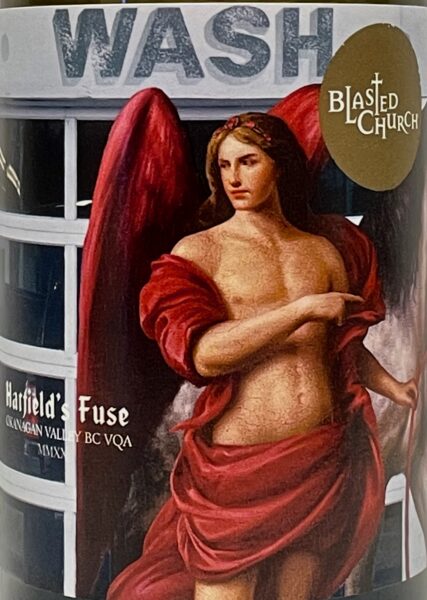
2020 Hatfield Fuse – This white blend is one of their top sellers – large production. With so many varieties going into the mix, the challenge here is to keep consistency. Viognier dominates, along with Chardonnay Musque, Orange Muscat, Gewürztramer, etc. It takes a keen palate to create just the right blend.
“The 2020 Hatfield`s Fuse is a blend of fruit from our estate vineyard in Okanagan Falls, as well as fruit from Oliver and Osoyoos. Each lot of fruit is harvested separately as it reaches a perfect balance between flavour, sugar, and acid to bring a specific character to the final blend. When it reaches the winery, the fruit is de-stemmed, but not crushed, before being pressed to tank. Every fermentation is managed individually, giving the cellar team a broad palette with which to blend the final wine.
The various components are selected to bring a piece to the whole. The Viognier and Chardonnay Musque bring richness and aromatic intensity, the Orange Muscat and Gewurztraminer contribute florals and spice, the Sauvignon Blanc and Pinot Blanc are perfect partners for the natural acidity each brings to the blend. Every wine in the blend has a specific role to play, and in 2020 they are all performing their roles beautifully!
A blend of 36% Viognier, 16% Orange Muscat, 12% Chardonnay Musque, 9% Sauvignon Blanc, 8% Chardonnay, 7% Pinot Blanc, 6% Pinot Gris, 4% Gewürztraminer, and 2% Riesling”
Blasted Church offers three tiers of wines. The Renaissance series showcases their best sellers, a dozen wines including Hatfield’s Fuse white blend, Big Bang Theory red and a great selection of single variety wines.
The Limited-Edition Retro Labels offerings feature wines from 2002 at very attractive prices. And the Small Blessings label is reserved for the small case lots. There are well over a dozen wines to choose from in this series.
In addition, they have some rare Library wines available from time to time so be sure to check their website to see what is currently available.
Here are some brief notes on the red wines we sampled.
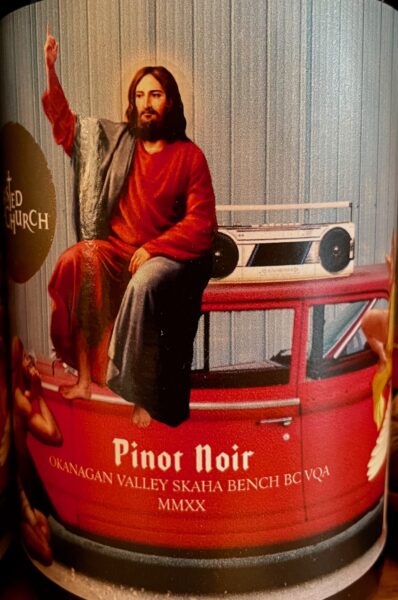
2020 Pinot Noir – the grapes, all clone 777, come from the estate’s upper block which is quite rocky. The fermenting grapes had 2 -3 punch downs per day to help with extraction and then spent 10 months in large 500-litre puncheons. The tannins were reined in so it wasn’t too big of a wine. The Pinot Noir will be ripped out of this location in favour of Cabernet Franc. 2022 will be the last Pinot Noir vintage, though it might make a comeback in a lower block in the future. Time will tell. Age-worthy for another 3-5 years.
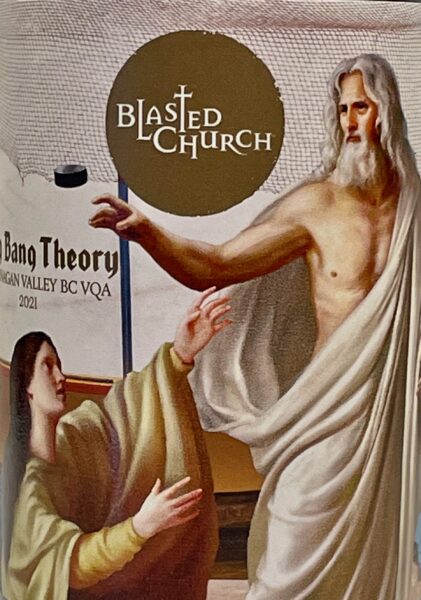
2021 Big Bang Theory – a tasty blend comprised of Merlot, Gamay Noir, Cabernet Sauvignon, Syrah, Pinot Noir. The trick here is to try for a consistent style with every vintage. The 2021is a little softer, floral, and fruit-forward style. Evan did a cross vintage with 15% of 2020 wine to flesh out the mid-palate. Good complexity. There was a lovely integrated touch of smoke on this one which really appealed to me. I’ll be serving it with ribs and grilled meats.
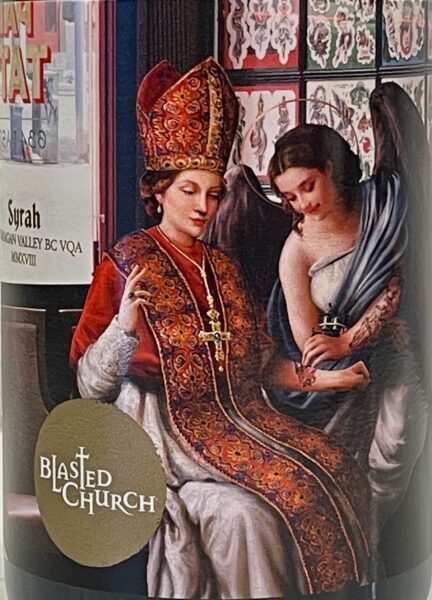
2018 Syrah – coming into its own co-fermented with 5% Viognier, pepper, and blackberry. Elegant/sophisticated.
“The Syrah was sourced from the Lloyd, House, Redbrick, and Suncrest vineyards, while the Viognier came from the Redbrick Vineyard; all in the Osoyoos area except for the Suncrest Vineyard in Oliver. The Viognier was co-fermented with the Syrah, contributing a floral elegance to the overall blend.
Depending on the evolution of each tank, the wines were left on skins from 18 to 21 days. Once maceration was complete, the free run wines were drained from each tank directly to barrel for malolactic fermentation. The oak was a mix of French, American, and Hungarian with 20% of the oak being new and the balance being second, third, fourth, and neutral. The wine was in barrel for 14 months before being racked to tank and blended and put back to barrel for an additional 4 months of barrel aging.”
Evan mentioned that COVID had an impact on his tasting group which is made up of fellow winemakers. Wine tasting groups, especially for wine makers, provide a good opportunity to keep taste buds in shape, expand horizons, avoid cellar palate, and allows them to share tips with each other.
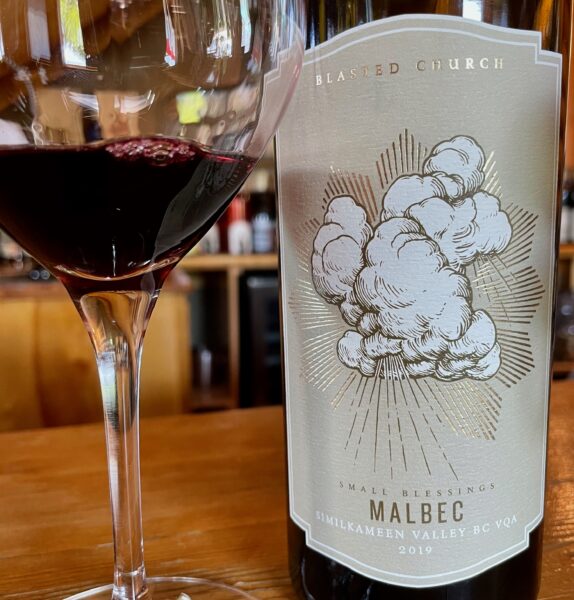
Small Blessings 2019 Malbec – from a Similkameen vineyard. Very smooth, lots of blueberries and baking spice, and good acidity, Sadly, this vineyard has been sold, so the grapes are no longer available. This vintage will be good for 10 years. 2019 had an early frost which resulted in a brighter wine. The 22 months in barrel worked magic. 13.5% ABV, 75 cases produced. The 2018 was riper and came in at 14.9% ABV.
“On October 17th, the grapes were hand harvested from the Mariposa Vineyard in the Similkameen Valley. In the winery, the fruit was destemmed but not crushed to tank for a 5-day cold soak before the fermentation kicked off. Once fermentation was underway, the tank was pumped over 1 to 3 times per day, depending on the needs of the fermentation.
After 19 days on the skins, the tank was drained using gravity to new (67%) and neutral (33%) French oak barrels. The wine was racked after 14 months to assemble the blend and put back to barrel for an additional 6 months of aging before bottling unfined and unfiltered.”
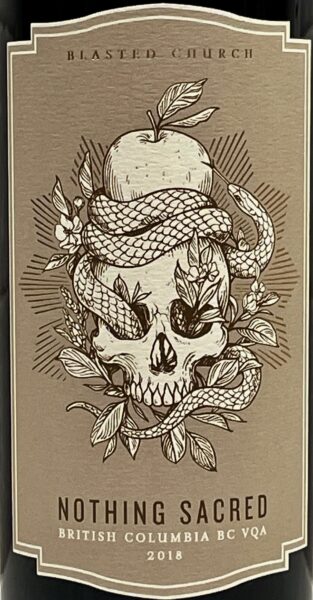
2018 Nothing Sacred – This is an Okanagan blend made in the style of a Meritage or Bordeaux blend. 38% Merlot, 25% Cabernet Sauvignon, 13%, Cabernet Franc, 12% Petit Verdot, and 12% Malbec. Merlot dominant blends are usually the case in the Okanagan. The 2017 vintage is starting to develop tertiary character.
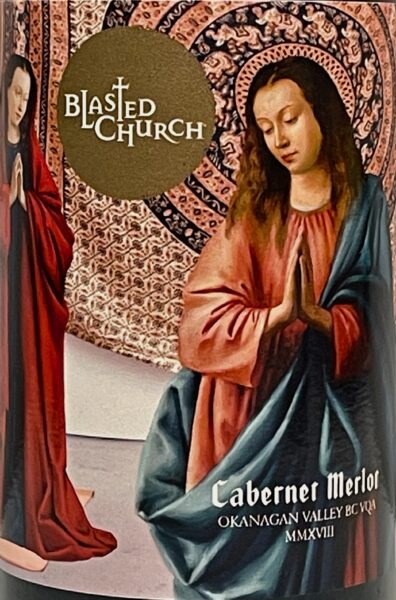
2018 Cab Merlot – More of a Meritage than the name would suggest. The 2019 vintage is comprised of – Cabernet Sauvignon 59%, Merlot 20%, 8% Petit Verdot, Cabernet Franc 7%, Malbec 6%.
“The oak was French, American, and Hungarian, of which 20% was new, 4% was second-fill, 25% was third-fill, and 51% was neutral. The wines were in barrel for 14 months before being racked to tank for blending and back to barrel for an additional 6 months of aging before bottling.”
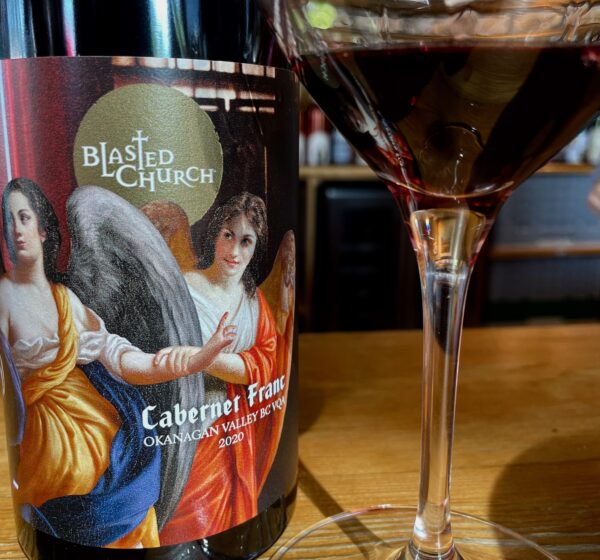
2020 Cab Franc – from the east bench of Osoyoos. Evan said it is great grape to work with. 40/50 percent new French oak barrels, very age-worthy.
“The fruit was hand harvested from the Redbrick Vineyard on the East Bench of Osoyoos on October 16th.” “The oak was 100% French, with 9% of the barrels being new, 64% third fill and the remaining 27% being neutral.”
We then moved on to two dessert wines.
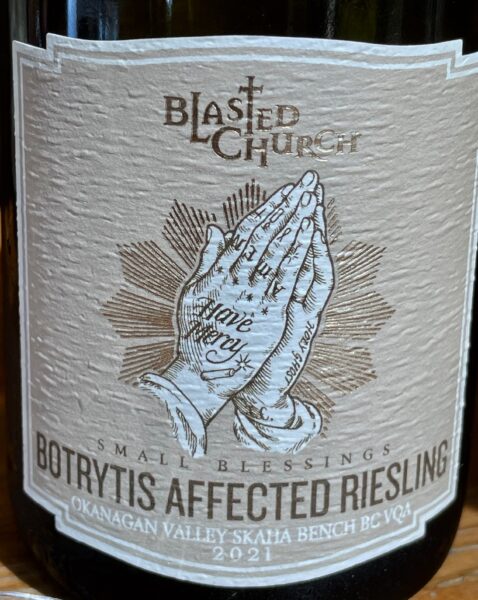
2021 Botrytis Affected Riesling – these were whole cluster pressed and the fermentation was stopped at 2/3 resulting in 65 grams of residual sugar (RS), a pH 2.99 and a total acidity (TA) above 10 grams per litre.
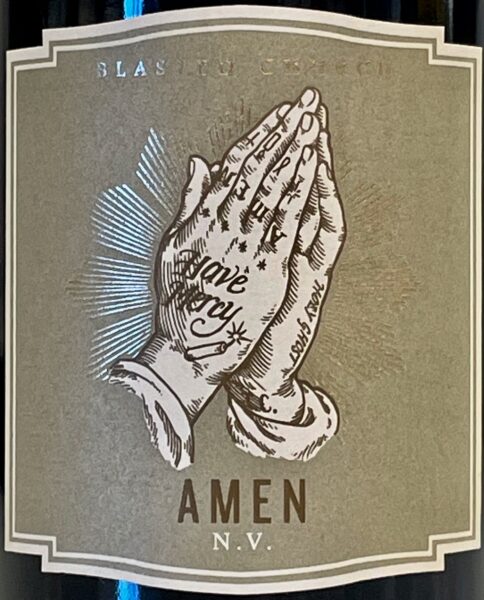
Amen NV – this is a port-style after-dinner wine made from 100% Merlot grapes and fortified with grape spirits from Maple Leaf Spirits in Penticton. Evan let the sugar drop to the halfway point and then added the spirits to stop the fermentation. It is a non-vintage 8 to 10-year-old blend made in the solera method.
“In the second phase, after half of the sugar has been consumed by the yeast, the still-fermenting wine is transferred into old French oak barrels where it is fortified using a pure grape spirit. The addition of the grape spirit effectively halts the fermentation, leaving the wine with a balance of unfermented sugars and alcohol, giving the Port-style wine its characteristic profile. The oldest portion of this wine, which makes up the majority of the blend, was aged in barrel for close to five years before being racked in preparation for bottling.”
We finished with:
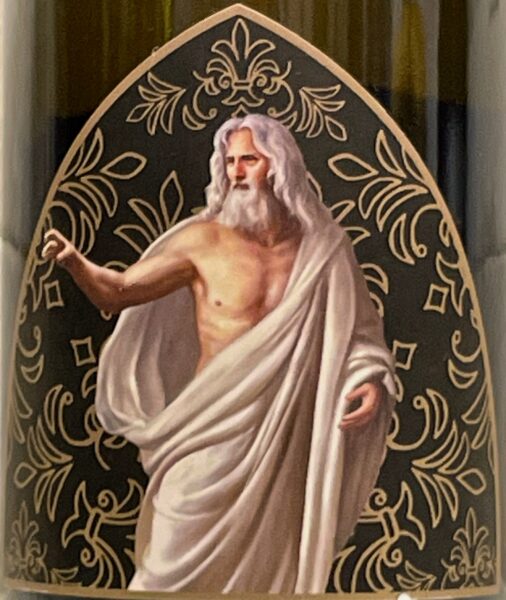
OMG Sparkling wine – a blend of Pinot Blanc, Chardonnay, and a splash of 2016 Pinot Noir made in the traditional method. It sat on the lees for 5 years. 3 gm per litre dosage. Beautiful at only 11% ABV.
“The fruit for the 2018 OMG was sourced exclusively from our estate vineyard on the Skaha Bench. The Pinot Blanc (60%) contributes beautiful acidity and green apple character to the wine, while the Chardonnay (40%) brings richness, citrus, balance and age-ability. Each vineyard block was hand-harvested, whole cluster pressed and fermented separately.
After several blending trials, the final composition of the base wine was assembled and put to bottle for secondary fermentation. As with any sparkling wine produced at Blasted Church Vineyards, the 2018 OMG was made in the traditional method where the secondary fermentation takes place in bottle prior to several years on lees. In the case of the 2018 OMG it was a minimum of four years on lees, before being hand riddled and disgorged.”
I followed up on this original visit and dropped by in early December to stock up on many of our favourites and had a catch-up with Luke Whittall, author, and Blasted Church’s Direct Sales Specialist.
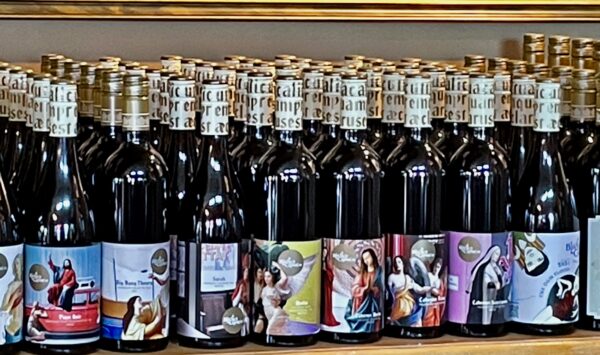
Be sure to make Blasted Church a must see on your next tour through Okanagan wine country. They offer an extensive selection of wines that you are sure to love.
(All photos – Sam Hauck)

